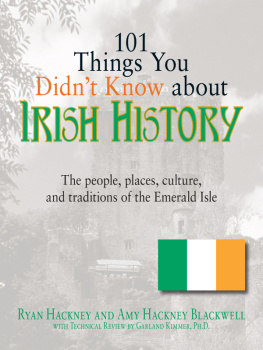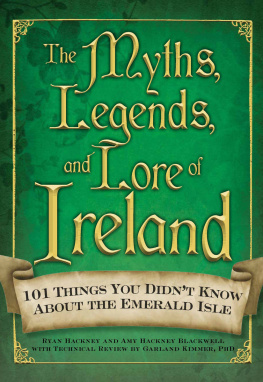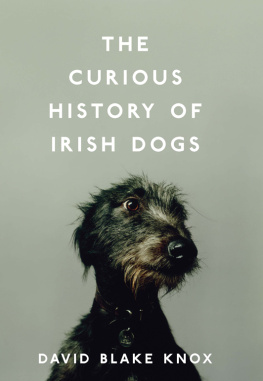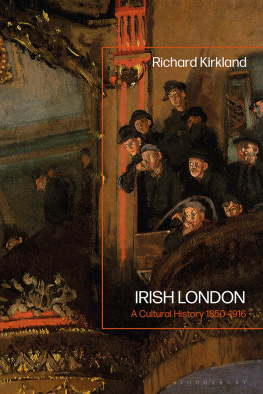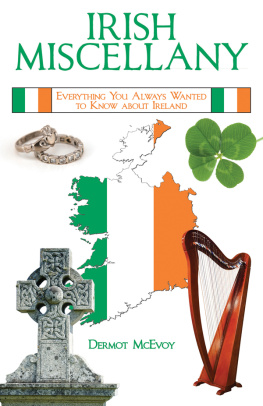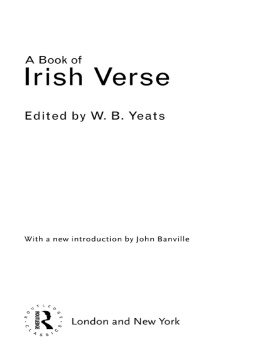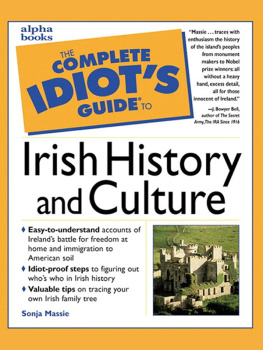
THINGS
YOU DIDNT
KNOW ABOUT
IRISH
HISTORY
The people, places, culture, and tradition
of the Emerald Isle
By Ryan Hackney and Amy Hackney Blackwell
with Technical Review by Garland Kimmer, Ph.D.

Copyright 2007, F+W Media, Inc.
Contains portions of material adapted or abridged from The Everything Irish History and
Heritage Book by Ryan Hackney and Amy Hackney Blackwell, 2004, F+W Media, Inc.
Published by Adams Media,
a division of F+W Media, Inc.
57 Littlefield Street
Avon, MA 02322
www.adamsmedia.com
ISBN 10: 1-59869-323-9
ISBN 13: 978-1-59869-323-2
eISBN: 978-1-4405-1718-1
Printed in the United States of America.
10 9 8 7 6 5 4 3 2
Library of Congress Cataloging-in-Publication Data
Hackney, Ryan.
101 things you didnt know about Irish history / by Ryan Hackney and Amy Hackney Blackwell;
with technical review by Garland Kimmer.
p. cm.
ISBN-13: 978-1-59869-323-2
ISBN-10: 1-59869-323-9
1. IrelandHistoryHandbooks, manuals, etc. 2. IrelandCivilizationHandbooks, manuals, etc.
I. Hackney Blackwell, Amy. II. Kimmer, Garland. III. Title. IV. Title: One
hundred and one things you didnt know about Irish history.
DA911.H32 2007
941.5dc22
2006028431
This publication is designed to provide accurate and authoritative information with regard to the subject matter covered. It is sold with the understanding that the publisher is not engaged in rendering legal, accounting, or other professional advice. If legal advice or other expert assistance is required, the services of a competent professional person should be sought.
From a Declaration of Principles jointly adopted by a Committee of the
American Bar Association and a Committee of Publishers and Associations
Many of the designations used by manufacturers and sellers to distinguish their products are claimed as trademarks. Where those designations appear in this book and Adams Media was aware of a trademark claim, the designations have been printed with initial capital letters.
This book is available at quantity discounts for bulk purchases.
For information, please call 1-800-289-0963.
Contents
Introduction
Ireland is an island that transcends both its geographical and political boundaries. This transcendence has not occurred because of either a powerful military or economic presence. It has, in fact, occurred despite the notable lack of either. Instead, Ireland can be found on every continent through the memories, stories, and dreams of the immigrants, exiles, and friends who treasure Irish culture. Recent population statistics show just over 4.2 million citizens in the Republic of Ireland, while counting the numbers of Irish expatriates presents a much larger, more complex problem. Numbers range as high as 80 million Irish migrs, a figure that suggests that Irishness exists as prominently metaphorically and spiritually as literally.
Perhaps more than any other culture, Ireland lives with the fundamental tension between its past and its present, between tradition and change, in the foreground of its everyday existence. The Ireland of 2006 is simultaneously the same and very different from the Ireland of my first visit in 1987. That summer, I spent time in Dublin, Sligo, and Galway. I was making a tour of Irelands recent literary past, and it was easy to believe that Irelands past was more alive and vibrant than its present.
Just a couple of years later, Mary Robinson became Irelands seventh president. If that office has traditionally been symbolic, Robinson turned both the symbolism and the role of the office on end. Her tenure underscores Irelands seemingly split personality. It is a culture that values tradition and history yet is not afraid to adapt and develop. Aside from being the first elected President to not have the support of Fianna Fil and Irelands first female President, Robinson shifted the ground rules for the officewhich youll learn about in this book. Moreover, she took Ireland onto the international stage more powerfully than ever before by becoming the UNs High Commissioner for Human Rights. She advocated powerfully for human rights out of the Irelands historic relationships with its more powerful neighbors.
In Irish letters, this difficult and at times diffident relationship between past and present lingered throughout the twentieth century. James Joyce worried that this was the case when he described Dublin as the center of Irelands paralysis in a letter to his publisher. Joyce found his vision of Dublin at a remove, writing in France and Switzerland to create in Dublin the quintessential setting for exploring the tensions between group and individual identity. This thematic tension dates back to early Celtic culture in Ireland, where existence outside the tribe was unthinkable.
Like Joyce, both W. B. Yeats and Seamus Heaney are intimately aware of their interactions with the historical (or perhaps prehistorical) role of the Irish poet. Poets possessed a power and prestige that allowed them to exist outside of the tribe and to move freely from place to place. Yeatss term as a senator in the 1920s hints at the prestige attached to men of letters that persisted into the twentieth century and beyond. Heaneys self-described status as an artful voyeur in Punishment, a poem that works as allegory for the Troubles in the North, serves as a reminder of the poets historical role as both chronicler of and outsider to the tribe.
The constant awareness of how Irelands epic, mythological past maintains itself into the present comes sharply into focus in the following pages: 101 Things can give you a start to learning about Irish history and heritage, but there is so much more to learn. This book brings you into Ireland thousands of years ago and leaves you in the present.
Garland Kimmer, Ph.D.
Part 1
Prehistory and Mythology
of Ancient Ireland
Ireland is an island with a past. People lived there for millennia before anyone started recording history, and they left their mark on the landscapestanding stones, odd-looking structures, great mounds of earth. The presence of so many prehistoric remains, a lot of which are pre-Celtic, ties Irelands past to its present. Celtic culture is everywhere in Ireland, from the stone-crosses in the countryside to patterns knit into wool sweaters. The influence of the Celts is remarkable, considering how little is actually known about them.
1 The Earliest Inhabitants
Compared with the European mainland, Ireland hasnt been inhabited for very long. Africa, the Middle East, and central Europe have all housed humans for hundreds of thousands of years, and there is evidence of humans in England going back at least 250,000 years. But it was only about 9,000 years ago that anyone ventured to the Emerald Isle. Why was this? One word: ice.
Ireland was covered with ice for a very long time. It had few plants, and the only animals who lived there were creatures that preferred snow and ice, such as reindeer, woolly mammoths, and the spectacular Irish giant deer. The temperature fluctuated, but mostly just in variations on the same theme of cold.
About 13,000 years ago, the ice finally started to recede, and Ireland warmed up. This was bad for some of the larger mammals, which became extinct, but it was good for smaller creatures and plants. No one knows for sure how Irelands wildlife got there; maybe it floated across the Irish Sea, or maybe there was a temporary bridge of land between Ireland and what is now called England. In any case, by about 5000 B.C.E. Ireland was covered with forests and full of wild beasts.
Next page
